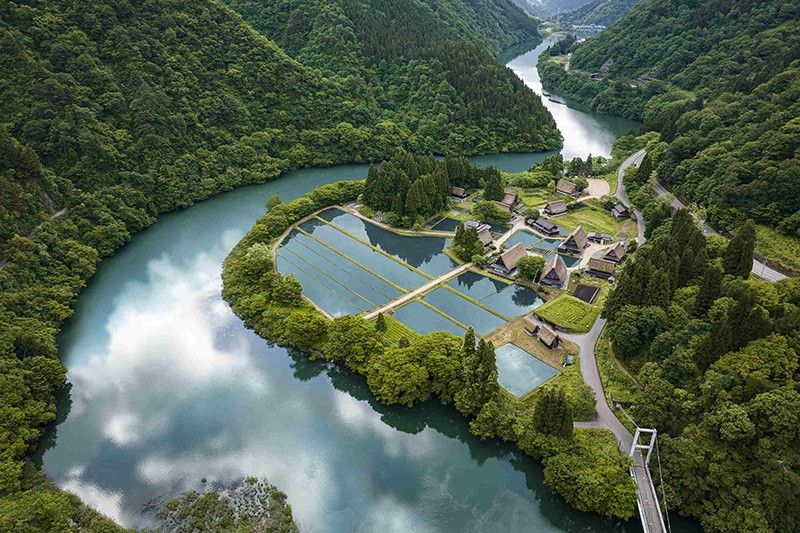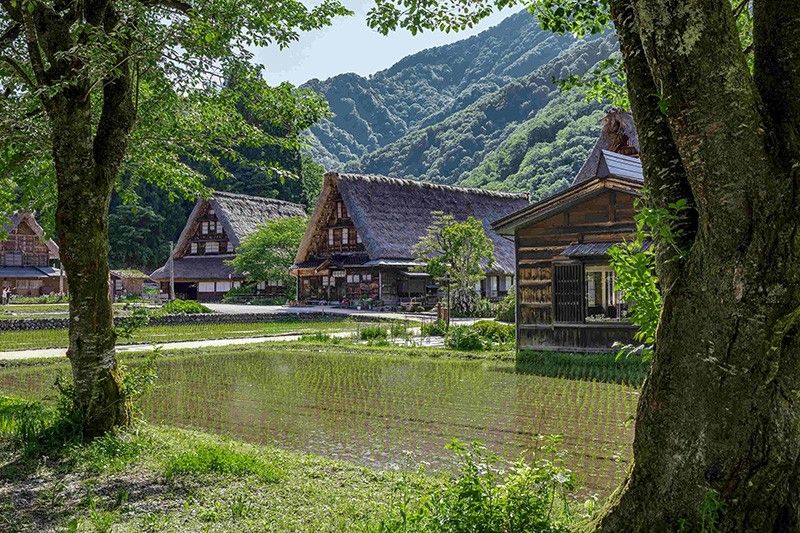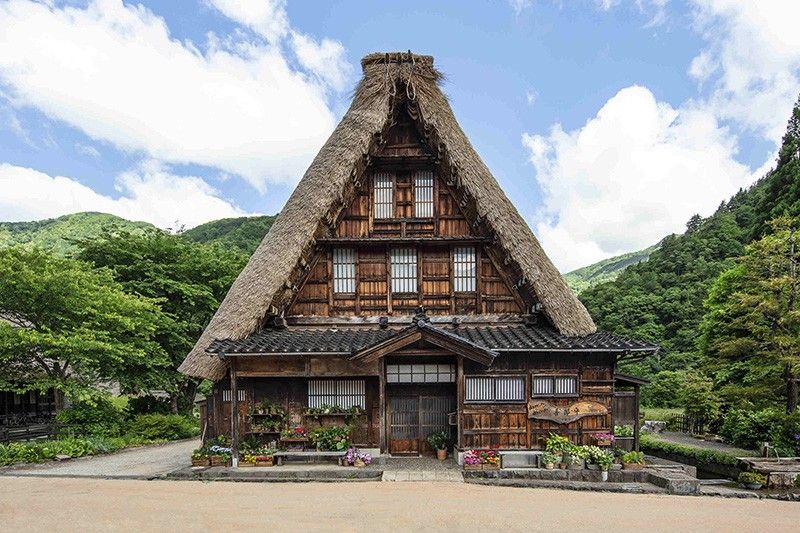For the first time in decades, Japan's 'hidden village' opens to overnight guests

MANILA, Philippines — Far from the maddening crowd, Suganuma Village in Gokayama, Toyama Prefecture in Japan is off the beaten track of the usual tourism ventures.
A UNESCO World Heritage Site, it is a quiet and beautiful village with Gassho-zukuri houses built from the late Edo period through the early Meiji period. These houses have been carefully preserved, and they offer breathtaking scenery as they are situated on the shores of the Sho River and surrounded by high, rugged mountains.
It is a picturesque nine-home village that, following three years of border closures and travel restrictions due to the worldwide pandemic, is only open to residents once the sun goes down. Truly one of the most beautiful and charming places in Japan, Suganuma Village is private and has remained one of Japan’s best-kept secrets.
Now, for the first time in decades, Suganuma Village is opening its doors to overnight guests.
Through Airbnb, guests will now get a rare opportunity to experience the history and heritage of a cultural time capsule, as the Nakashima family — fifth generation locals — hosts guests under the 170-year-old thatched roof of their family home for two nights this July and grants them the opportunity to immerse themselves in the rich traditions of the area.
In a recent survey of Airbnb users, over 60% of the 19,000 respondents said they felt traveling on Airbnb provided a closer connection to the local culture than staying in a hotel or resort. Suganuma is often regarded as a “hidden village” because it is without tourist accommodations.

The village’s Gassho-zukuri style farmhouses, like the Nakashimas’ family home, are particular to the region, with their pitched, thatched roof structures enabling these homes to withstand heavy winter snowfall and the test of time.
The thatching technique is a local tradition that requires a great deal of time and effort, so locals work together based on the system of yui, the spirit of mutual support, in which Suganuma and its preservation are rooted.
“We are honored to offer a truly unique experience in Suganuma village, a World Heritage Site, through our collaboration with Airbnb. The history and culture of this charming small town, coupled with the warm hearts of the people who live there, will make for a fascinating and restorative stay. We hope this campaign brings attention to this beautiful destination for both Japanese residents and guests from around the world,” said Mikio Tanaka, Mayor of Nanto City, Toyama Prefecture.
“I am delighted to open my family’s home for a unique stay that will enable guests to enjoy the traditional life of our beautiful village of Suganuma. Through our collaboration with Airbnb, my family and I look forward to providing guests with unique experiences that have been part of our village for centuries,” said Shinichi Nakashima, owner of the house and Airbnb Host.

The two-night stay for two people at the Nakashimas’ home is scheduled on July 17 to 19, 2023, for $0, yes, as a nod to the priceless nature of the experience.
During their stay, the guests are entitled to:
- Enjoy a traditional welcome tea and local dishes prepared by Mr. Nakashima, including Gokayama tofu, mountain vegetables and freshly-caught river fish.
- Learn about local traditions that have been sustained for centuries, such as the making of washi, a paper made of local fiber, and the creation of sasara, a traditional instrument featured in one of the region’s oldest folk songs.
- Enjoy a magical evening light show and folk song experience, where locals illuminate their traditional homes and local song and dance is showcased.
- Participate in a hands-on workshop crafting thatched roofs emblematic of local Gassho-zukuri building techniques.
- Explore the sanctity of the village’s lush surroundings with a relaxing guided bike ride.
To facilitate disconnecting from technology and reconnecting with nature while on site, guests will receive a “Disconnect to Connect” kit that includes a stationery set made of traditional washi paper, an instant camera and a local aromatherapy kit.
RELATED: Five Japanese cities in five days



















